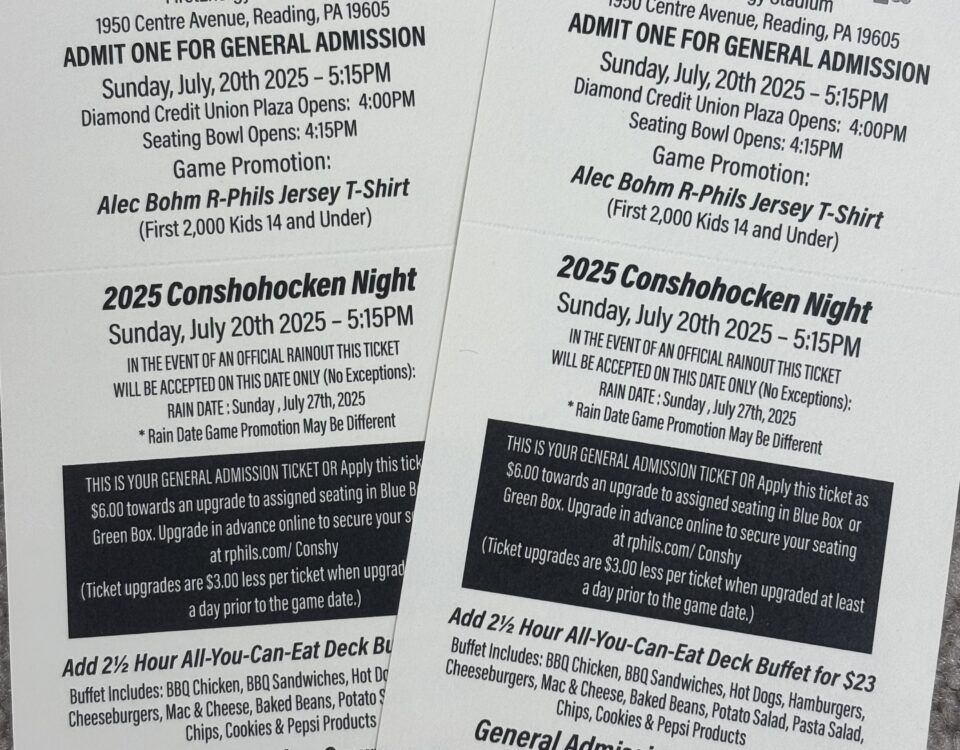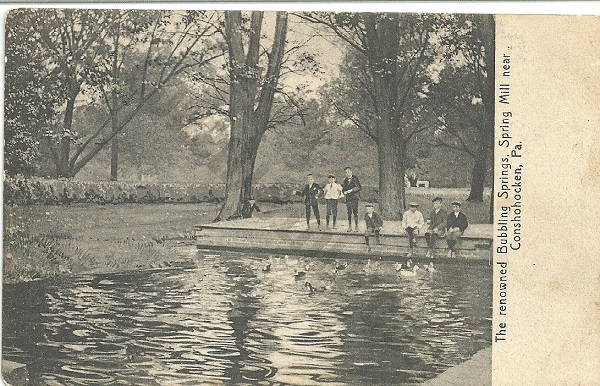
Some Old Swimming Holes, and a Few That Are Still Around
June 22, 2020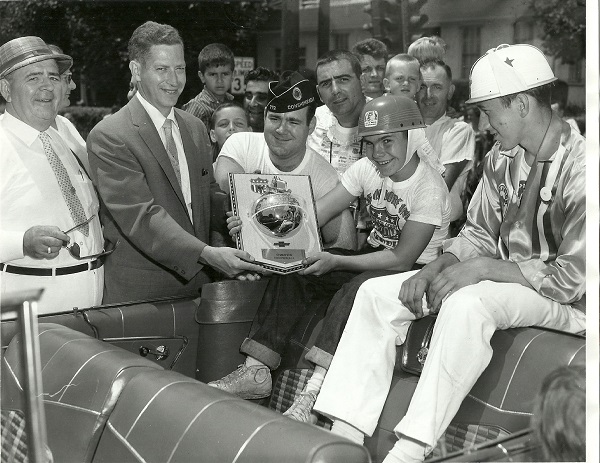
Soap Box Derby , Was Never More Popular Than it was in the 1950’s and 1960’s
June 30, 2020Soap Box Derby – Going Back to the Beginning
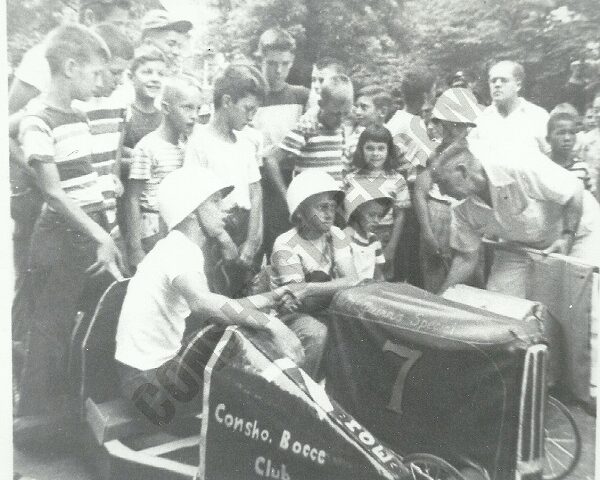
SOAP BOX DERBY
GOING BACK TO THE BEGINNING
By Jack Coll
6-6-20
Editor’s Note: With the cancellation of the Conshohocken Annual Fourth of July Soap Box Derby due to the coronavirus I decided to dig deep into my Soap Box Derby files and provide a little history and perhaps a few memories for our Soap Box Derby fans everywhere.
This is the First in a Series of articles on the Conshohocken Soap Box Derby
So ya wanna know about soap box derby, well you tuned into Conshystuff.com and we just love talking about Conshohocken’s great history, especially Soap Box Derby history. Conshohocken’s very first soap box derby race was held in 1938, we ran our first All American Soap Box Derby sanctioned race in 1952. In the beginning there were Eddie and Billy Moore, there were three ramps, there was the American Legion Post, there were winners and near winners and for a time our champions were put on an airplane to be flown to Akron Ohio to compete in the “All American Soap Box Derby” Racing Event held in Ohio since 1934. At one time there was serious consideration to establish a local “Derby Downs” at Sutcliffe Park. We’ll get to a lot of that but for now let’s go back to the beginning.
So it all started with a newspaper photographer, (I happen to like photographers). The country was fighting to climb out of a depression back in 1933 and a photographer who worked for the Dayton (Ohio) Daily News named Myron “Scottie” Scott. He was known at his paper as a creative photographer always on the hunt for a few filler photos, “filler photos” in the business happens when a photographer doesn’t have a news assignment or any other kind of assignment will typically wander around town to capture a “filler photo” generally weather related, umbrella’s up for a rainy day, shirts off on a hot summer day, kids playing in the park, someone eating ice cream and so-on. These photographs may-or may-not be used, only if there is a space or two in the paper with no news or advertising to be used, a filler photo gets plugged in.
So Scottie was on the hunt for a filler photo when he encountered three young boys racing home-made buggies down a street with an incline. The buggies were nothing more than a couple of pieces of lumber from skids with wheels they managed to dig-up and a rope connected to the front wheels for steering. Scottie thought it was a terrific scene and a light bulb went off in his head, Why not hold a coasting race and award a prize to the winner? Scottie told the boys to come back to the same hill with their friends a week later, and they could participate in a race with a “Loving Cup”-as it was called in Depression America-as a prize.
The week passed, and nineteen boys arrived at the site in suburban Dayton to compete for honors. One of the cars, which did not win personified Scottie’s vision of a “Soap Box Derby Racer.” It was a home-made rounded looking car painted black with a big white “7” painted on the side of the racer owned and painted by Robert Gravett. Scottie got his pictures and what became known as “Old No. 7,” became the symbol of the All American Derby for more than three decades. Scottie promoted a race for the following year with $200.00 in prize money sponsored by the newspaper, ($200.00 in 1934 was a ton of money) and 362 kids showed up with homemade cars built of orange crates, sheet tin, wagon and baby-buggy wheels and almost everything of “junk value.” The paper reported that more than 40,000 spectators turned out to view the spectacle, the following year the event went national, the location of the race was moved to Akron, Ohio, and the rest is history, the “Greatest Amateur Racing Event in the World,” was born.
In 1935, racing champions from 34 cities all sponsored by newspapers, showed up in Akron to compete for event bigger prizes as Chevrolet Automobile and four Tire Companies all located in Ohio had all signed on as sponsors. By 1962 Scholarship prize money for the top nine contestants was $30,000, first prize was $7,500. In 1962, 183 racers from around the globe including the first championship from Okinawa, who had traveled 7,000 miles to race on a beautiful August day. 1962 was thought to be the largest crowd, estimated at 75,000.
In 1971 a total of 272 racing contestants raced in the All-American including five females, I believe that was the largest amount of contestants to date, it was the first time females competed in the All-American. By 1972, twenty seven of the 251 champs were female, two of them placed in the top nine.
The early 1970’s turned sour for the All-American, first came the screaming headline of the Akron Beacon Journal on September 29, 1972, “Chevrolet Quits Soap Box Derby” That announcement was followed a year later by the cheating scandal of 1973 that marked the decline of the All-American Soap Box Derby. Participation took a hit going from 272 racers in 1971, down to 251 champs in 1972, to 138 racers in 1974 and the derby was left with no major sponsors. The derby experienced a resurrection in the early 1980’s thanks in large part to thousands of volunteers and new sponsors helping to revitalize the entire organization.
In 1935 while things were taking-off in Akron, Norristown held a soap box derby race sponsored by Sears, Roebuck and Company. The race was held on West Main Street from Forrest Avenue down to Buttonwood Street. By 1936 a number of Conshohocken lads were building cars and entering them into the Norristown race. Two years later Conshohocken announced its own race to be held on the Fourth of July, on Spring Mill Avenue.
The very first soap box derby held in Conshohocken was sponsored by the John F. DeHaven American Legion Post who once had their Post Home at Second Avenue and Forrest Street for many years. Serving on the committee for the event were Calvin Rigg, Chairman; E. J. Kirkpatrick, David Allan, Charles Miller, Llewellyn Jones and Brooke Moore.
The committee announced that the racers would be broken up into two classes, Class “A” was for boys 13-16 years old and Class “B” is for boy 9-13, with a mid-year birthday separating the 13 year olds.
The prizes being offered to the winners and runner’s-up were all donated by local merchants. The prizes included a for the first place winners a brand new bicycle and wrist watch, other prizes include roller skates, hunting set, a bicycle tire, knickers, polo shirt, six theatre passes to the Riant Theatre, (that was a big deal) a plant and numerous other items.
The winner and runner-up in each class were entered in the Philadelphia finals with a chance to enter the national finals in Akron Ohio. When race day arrived on July 4th, 1938 more than 5,000 spectators jammed Spring Mill Avenue from Cherry Street down to Jones Street. When it was over Walt Cherry of 415 Spring Mill Avenue won the Class “A” Division with his “Blue Comet” plywood car defeating Matthew O’Connor winner of the Class “B.”
A few of the other participants who drove their home-made cars down Spring Mill Avenue included Joe DePaul, Merkel Ristine, Melvin Nixon, Ronald Custer, Reese Davis, Lewis Desimone, Frank Allen, Barton Bowman, Merrill Jacobs, Reid Todd, Edward Grain, Emil Wosczyna, Ralph Cashin, James Stemple, and Holland Earle just name a few of the boys.
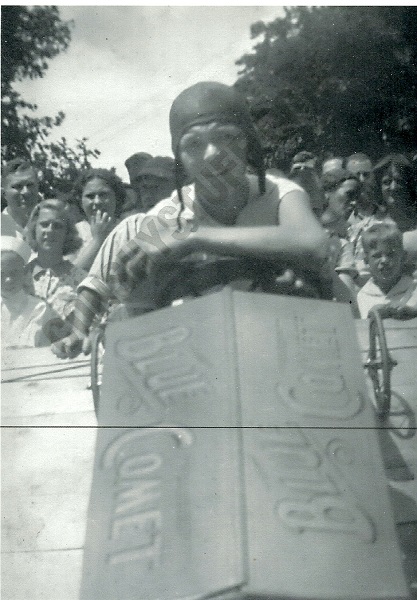
I interviewed Walt Cherry years later at his Upper Merion home, he talked about how great it was now that females could race and noted what a great job the Conshohocken Ambucs have done with the race over the years. Cherry still knew a little bit about soap box as he helped run a soap box derby and built many cars for boys in the Swedesburg Boys Club for a number of years helping kids build and race their cars. We sat on his back deck and talked about his former house at 415 Spring Mill Avenue above Cherry’s Store, we talked about his brothers and sisters, we talked about his four years in the service and about what a great store Jim Meaney had down on lower Fayette Street, (I think Meaney’s was once located at 44 Fayette Street if I’m not mistaken) and of course we talked about the 1938 race. The funny thing is all those years later Walt still marveled over the bike he had won, “I raced to win the bike” noted Cherry. “It was a brand new bike, and there weren’t many of them around in Conshohocken I’ll tell you.” He laughed, “it was loaded with all the extra’s, I mean you had the balloon tires, a horn, a light, AND a chain guard. When I walked down to Meaney’s Store to claim my prize I felt like I was the king of Conshohocken walking that thing home, no I didn’t ride it or drive it, no I wanted that feeling to last forever, I walked it home.”
Well it wasn’t forever, four years later World War II was raging and Walt signed up to defend our country, when he returned both the bike and his Blue Comet Soap Box car were missing from the barn. When I interviewed him in the summer of 1993 he still didn’t know whatever happened to his stuff but he wasn’t bitter, “Hey, I hope whoever got them enjoyed them as much as I did, life goes on.”
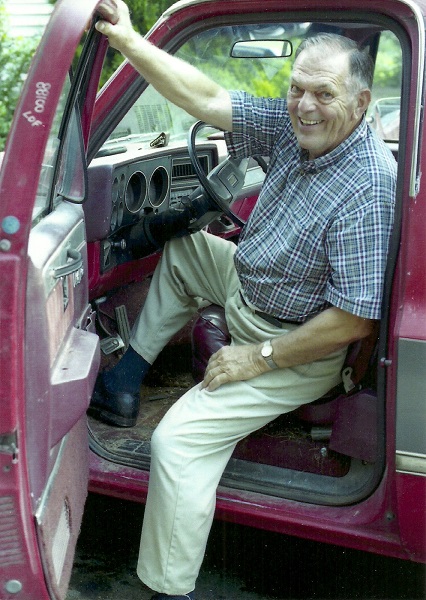
You didn’t need much time to know that Walt Cherry was Conshohocken through-and-through. He talked about everything Conshy, was a proud resident and former resident, proud to have been a part of the Conshohocken Soap Box Derby lore. As I walked out of his driveway I noticed his truck sitting just off the porch with a large decal that simply read: “LEE TIRES,” now that’s Conshohocken.
In 1939 many improvements were made for the race, the course was still on Spring Mill Avenue from Cherry Street down past Jones Street, the length of the track had been extended about 50 feet over the previous year. Higher starting ramps were constructed to give the racers a faster start and a loud speaker system was installed by Walter Olsta so the entire town could hear the description of the race as it happened. As an added bonus Benjamin Bache, manager of the Riant Theatre had arranged a film crew to be present to make a movie of the race so that it could be viewed at the theatre at a later date. (If anyone somehow has a copy of this race I’m sure there’s a whole lot of Conshohocken residents and racers who would just love to see it)
OK, I’m gonna print the list of prizes that were up for grabs for the 1939 derby racers, if you’re an old timer reading this you’ll just gonna love this, ah, the memories and knowing what a big deal these prizes meant to win. If you’re a youngster reading this, (you know, say like under 50 years old or younger,) well, you’ll never know or understand what a big deal these prizes really were back then. So for you’re reading and nostalgic pleasure here you are, just some of the prizes offered up by our local merchants:
E. F. MOORE—Portable Radio; JAMES P. MEANEY—Chest of tools OR a Portable Radio and a baseball glove as a consolation prize; SEARS AND ROEBUCK COMPANY—Outfielder’s Glove; NESTER’S SPORT SHOP—Softball; GEORGE W. TAYLOR—Catcher’s Glove; A. K. TAYLOR—A Year’s Subscription to any Boy’s Magazine; CONSHOHOCKEN BARGAIN HOUSE—Merchandise; ECONOMY SHOE STORE—Shoes; SOCKETTS SHOE STORE—Sneaks; WALLACE JEWELRY STORE—Boy’s Wrist Watch; GABINS—Glove; ALLEN’S SERVICE STATION—Merchandise; SAM PENN’S VARIETY STORE—Roller Skates; REDMOND’S SHOE STORE—Merchandise; JACOBSON’S MEN’S WEAR—Merchandise; B. E. BLOCK & BROTHERS—Merchandise; SCHLAGLE’S SKATING RINK—Two Week’s Free Skating to Every Participant and Two Month’s Free Skating to the Winner; WILKINSON’S MARKET—Merchandise; CONSHOHOCKEN FRUIT MARKET—Merchandise; SHIRLEY’S MARKET—Merchandise; RIANT THEATRE—Thirty Day Free Pass.
The Soap Box Derby Committee announced that more GREAT prizes would be added to the list!
Once again in the 1939 race Walt Cherry and Matthew O’Connor won first and second place in front of a crowd estimated in the thousands. There were several accidents during the course of the race including an ankle injury to William Earl who resided on East Fourth Avenue and was the Washington Fire Company’s oldest living member. Earl was struck by a car driven by Matthew O’Connor as it ran off the course. The aged fireman pushed a small girl from in front of the moving car but failed to get out of the way in time and was struck. He was knocked to the ground where he struck his ankle on the curb. He was removed to his home in the automobile of the Keystone Automobile Club.
In the 1940 race Matthew O’Connor was the winner in Class “A” taking the award of $25.00 offered by E. Francis Moore, proprietor of the local Chevrolet agency. The Class “B” prize was divided between Michael O’Connor and Frank Ashton. They won the right to race against each other to decide the second place winner but both cars crashed and were put out of commission. The two drivers pulled straws and Ashton was awarded $10.00 and O’Connor was awarded a radio.
World War II halted the soap box derby after 1940 giving organizers, residents and participants a chance to reflect back. Youngsters who had their heart set on racing in the big event were disappointed as the years went by with no race. It wasn’t until eleven years later that Conshohocken’s Fourth Soap Box Derby Race would take place. The race once again was sponsored by the John F. DeHaven Post 129, American Legion and took place on Fayette Street, the race was called a “Push-Mobile Derby Race.” The race course was from Eighth Avenue down to Sixth Avenue. Fifteen home-made Push-Mobiles participated for prizes including a $52.00 bicycle donated by E. F. Moore Chevrolet Agency, a wrist watch, a pair of boxing gloves and other awards donated by James P. Meaney; a volley ball, donated by Robert W. Tole; a wallet, donated by George Rafferty; a pair of roller skates donated by Francis Bobenrieth; baseball gloves and bat, donated by John Brothers; and a baseball bat donated by Warrell’s.
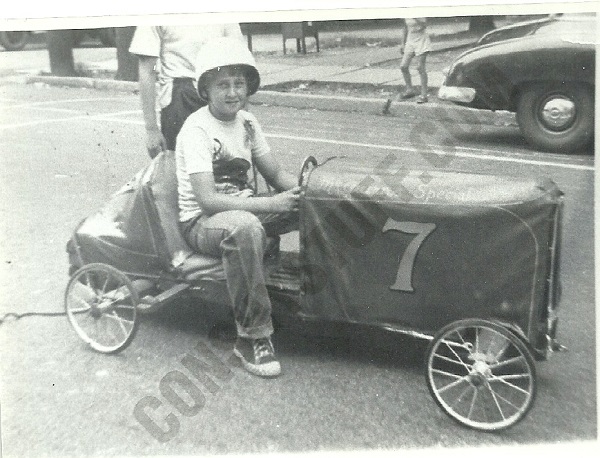
David McQuirns beat out ten other contestants with his #7 car including Warren Moyer who took second place. The other eight contestants who all also won prizes included Larry Palacio, John Freeland, James Neve Jr., David Frost, Tony Moore, Jerry Freas, Lowell Sibole and Charles Frost.
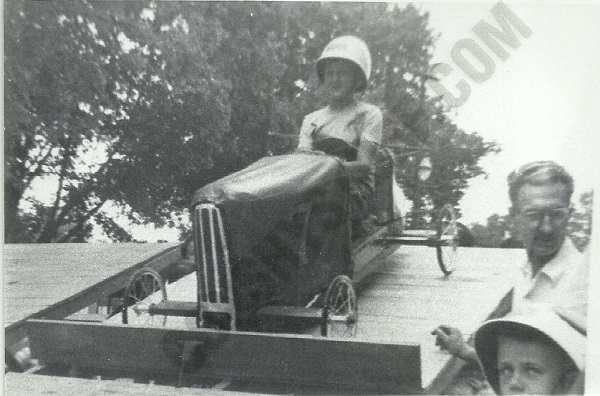
1952 started a whole new era in Conshohocken’s Soap Box Derby Eddie and William Moore with a little help from a lot of friends redefined Conshohocken’s race, and we started flying our champions out to Akron for some unforgettable events.
We’ll see you in a week or so with Part Two of Conshystuff’s Soap Box Derby, looking back at a few good memories.
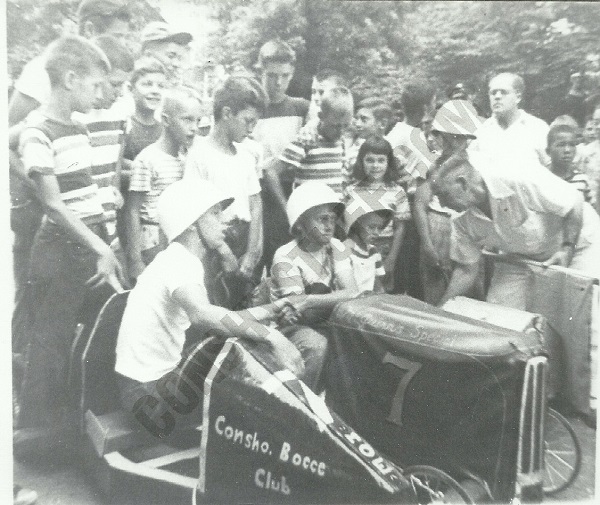
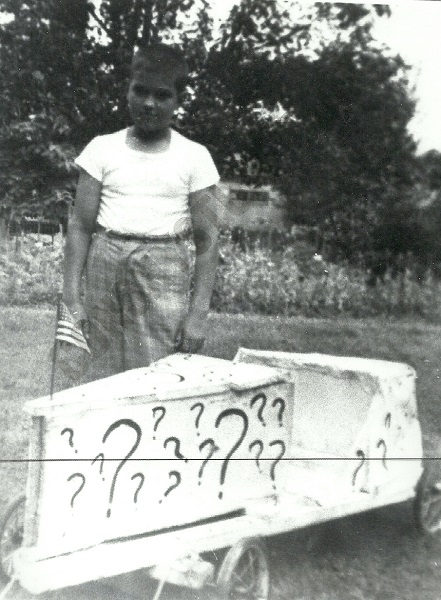
Photographs seen above include:
Walt Cherry, 14 years old, poses in his Blue Comet on the starting ramps after winning the 1938 Soap Box Derby held on Spring Mill Avenue.
Walt Cherry poses in his truck at his Upper Merion home, the photograph was taken by Gene Walsh, long-time Norristown Times Herald photographer on July 3, 2001. Walt passed away in 2005.
Dave McQuirns poses in his car, #7, on Fayette Street before the Push-Mobile Race held in 1951. Dave is also seen on the old wooden ramps constructed on Fayette Street for the race. Notice his wheels that look like they came off two, of the shopping carts that a lot of residents used back then to cart their groceries home form the super market.
Dave McQuirns is surrounded by well-wishers after winning the 1951 Push-Mobile Race. Notice the car next to him that was sponsored by the Conshohocken Bocce Club.
Lowell Sibole poses with his push-mobile he built in 1951. Lowell lasted for five heats back then but would have to wait until 1953 to win a trip to Akron Ohio.

